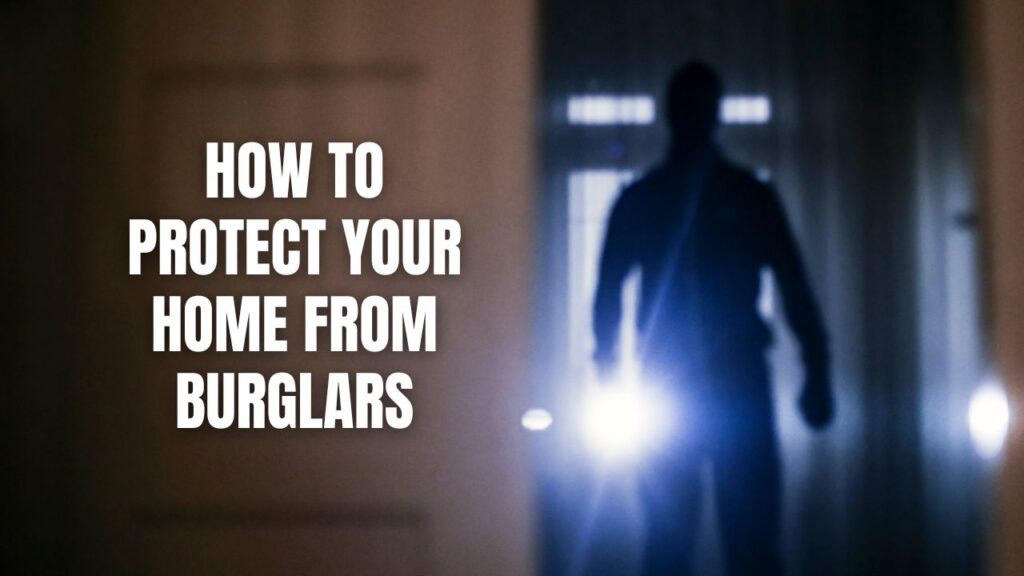Protecting our homes from burglars starts with a mix of physical security, smart technology, and strategic planning. Strengthening doors, installing security cameras, and making our homes look occupied can deter criminals. By being proactive, we can create a safer living space for ourselves and our families.
Home security isn’t just about protecting valuables—it’s about keeping our loved ones safe. Burglars often target homes that seem easy to break into, so reinforcing our property is crucial. With a combination of traditional locks, modern technology, and common-sense strategies, we can significantly reduce the risk of break-ins.
Key Takeaways:
- Reinforce entry points: Use strong doors, deadbolts, and window locks.
- Invest in smart security: Install cameras, alarm systems, and motion-sensor lights.
- Create the illusion of occupancy: Use timers for lights and TVs when away.
- Secure the perimeter: Lock garages, fences, and outdoor areas.
- Be prepared: Keep valuables documented and stored safely.

Physical Security Measures
Reinforcing Doors and Windows
Burglars often enter through weak doors and unlocked windows. Here’s how to fortify them:
- Use solid-core doors with metal reinforcements around locks.
- Install deadbolts with at least a one-inch throw.
- Reinforce door frames with security plates to prevent forced entry.
- Add window security bars or shatterproof film to prevent access.
- Install pin locks on sliding doors or place a rod in the track to prevent movement.
Securing Entryways and Outdoor Spaces
An often-overlooked aspect of security is securing the home’s perimeter:
- Use chain-link or ornamental fences with pointed tops.
- Plant thorny bushes under windows to make access difficult.
- Install sturdy gates and keep them locked at all times.
- Cover garage windows to prevent burglars from scoping out valuables.
- Use padlocks on sheds and storage areas.
Smart Home Security Measures
Home Security Systems
A security system is a powerful deterrent:
- Install an alarm system with sensors on doors and windows.
- Choose a system with professional monitoring to ensure quick response times.
- Place security signs and stickers around the property as a deterrent.
Security Cameras and Video Doorbells
Modern cameras offer real-time monitoring:
- Install cameras with night vision and motion detection.
- Use video doorbells with two-way audio to speak with visitors remotely.
- Place cameras in high-traffic areas, such as entryways and driveways.
- Set up cloud storage to review footage if needed.
Motion Sensor Lighting
Proper lighting discourages burglars:
- Install motion-activated lights around doors and windows.
- Use solar-powered lights for continuous operation.
- Ensure pathways, driveways, and backyard areas are well-lit.
Strategic Planning for Home Security
Creating the Illusion of Occupancy
Burglars avoid homes that seem occupied:
- Use timers to turn lights and TVs on and off.
- Leave a radio playing to create background noise.
- Park a car in the driveway when away for long periods.
- Avoid advertising travel plans on social media.
Securing Garages and Outdoor Spaces
Outdoor areas can be weak points:
- Lock the garage door and install a security camera nearby.
- Keep tools and ladders locked away to prevent burglars from using them.
- Install a garage door sensor to detect unauthorized access.
Preparing for Emergencies
Having a plan in place minimizes risks:
- Keep important documents in a fireproof and waterproof safe.
- Create a home inventory with photos and receipts for insurance claims.
- Have an emergency exit plan and practice it with family members.
Additional Home Security Tips
- Get to know your neighbors. They can keep an eye on your home when you’re away.
- Sign up for neighborhood watch programs. A community effort helps deter crime.
- Keep blinds closed at night. This prevents burglars from seeing inside.
- Install a peephole. Always check who’s at the door before opening it.
- Change locks when moving into a new home. Previous owners may still have copies.
Frequently Asked Questions (FAQs)
What is the best deterrent for burglars?
The best deterrents include visible security cameras, alarm systems, and motion-activated lighting. Burglars avoid homes that look difficult to break into.
Do burglars avoid homes with dogs?
Yes, most burglars prefer to avoid homes with large or loud dogs since they attract attention. Even a “Beware of Dog” sign can act as a deterrent.
How can I secure my home while on vacation?
Use timers for lights, stop mail delivery, and have a neighbor check on the house. Security cameras with remote access can help you monitor your home.
Are smart locks safe?
Smart locks are generally secure, but it’s important to use strong passwords and two-factor authentication to prevent hacking.
Do burglars return to the same house?
Sometimes. If they found valuables or weak security, they may come back. Strengthening security measures can prevent repeat break-ins.
Final Thoughts: Stay One Step Ahead of Burglars
Securing our homes is a proactive effort that combines strong physical barriers, smart technology, and strategic habits. By reinforcing doors and windows, investing in security systems, and maintaining a vigilant routine, we can keep burglars at bay. Safety starts with us, and with the right precautions, we can create a secure and peaceful home environment.
Contact Callaway Security to bolster up your home security!









